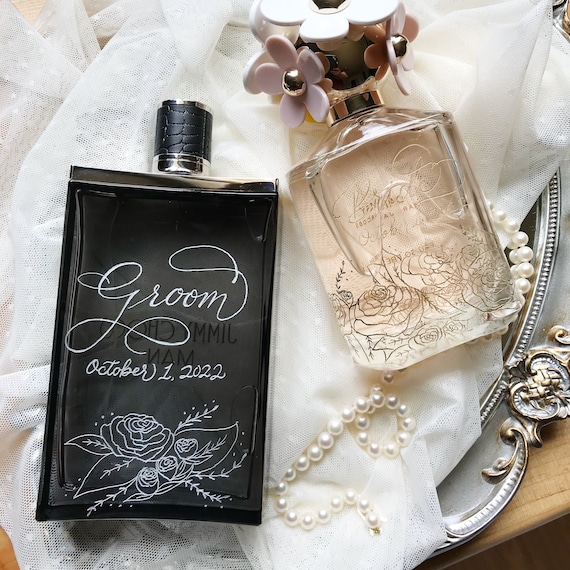Release Your Imagination With a Scent Making Course Tailored for Beginners and Enthusiasts Alike
Starting a journey of scent development can be a satisfying and informing experience. The art of crafting scents that resonate with your uniqueness is an ability that can be sharpened and treasured. Think of having the ability to blend various notes and essences to produce an unique scent that captures your significance. A scent making class customized for newbies and enthusiasts provides a structured yet liberating setting to explore the realms of perfumery. This course is not almost blending fragrances; it is concerning understanding the subtleties of different components, finding out the strategies of mixing, and inevitably, developing an aroma that tells your tale.
Discover the Globe of Fragrances
Start an astounding trip into the detailed realm of scents, where aromas hold the power to evoke memories and feelings with impressive strength. The world of scents is a rich tapestry woven from a myriad of aromatic notes, each with the ability of informing a distinct tale and triggering a various experience within us. From the citrusy burst of bergamot to the cozy welcome of vanilla, scents have the capacity to transfer us to different times and places, causing a symphony of feelings in the process.
Checking out the globe of scents opens up a sensory adventure like nothing else. By understanding the various fragrance family members, notes, and accords, fanatics can decipher the language of perfumery and unlock the secrets behind their preferred scents. Delving right into this globe not just improves one's olfactory gratitude yet also offers a platform for imaginative expression through the art of fragrance mixing.
In a scent making class developed for novices and enthusiasts, individuals can immerse themselves in this bewitching world, discovering the essentials of perfumery and acquiring hands-on experience in crafting their signature aromas. Through this expedition, individuals can absolutely uncover the magic that exists within each container of perfume, making the experience both educational and inspiring.
Essential Tools and Ingredients
Checking out the globe of scent creation needs a comprehensive understanding of the crucial tools and active ingredients used in perfumery. To begin, a fragrance making package is essential. This package usually consists of glass droppers, perfume containers, pipettes for accurate dimensions, and scent screening strips. Additionally, a choice of high-grade essential oils, scent oils, and aroma chemicals forms the structure of any fragrance creation. Essential oils are obtained from all-natural resources like flowers, fruits, and spices, imparting unique scents to the fragrance. Fragrance oils, on the other hand, are synthetic and offer a surprise gift shop vast array of scents not found in nature. Aroma chemicals are crucial for enhancing and stabilizing the scent, making sure durability and depth. Provider oils such as jojoba or fractionated coconut oil are additionally vital for diluting the focused necessary oils and scent oils to safe degrees for skin application. With these tools and components in hand, aspiring perfumers can embark on an innovative trip to craft their trademark scents.
Step-by-Step Perfume Making Process
Having acquired a comprehensive understanding of the crucial tools and components essential for perfume production, the next essential step is to detail the thorough process involved in crafting a special scent. The perfume making procedure generally begins with choosing a base note, which forms the foundation of the scent, adhered to by adding middle notes that give personality and deepness. The final action entails filtering system the fragrance to get rid of any type of bits or pollutants, resulting in a clear and refined fragrance ready for bottling.
Customizing Your Signature Scent
Crafting an individualized fragrance that resonates with your one-of-a-kind character and design calls for a thoughtful and systematic technique. When customizing your trademark fragrance, consider the numerous fragrance families such as flower, asian, woody, and fresh, to establish the overarching scent profile you prefer. Resources Begin by choosing a base note, which forms the structure of your fragrance and has a tendency to last the lengthiest. Common base notes include sandalwood, vanilla, and patchouli. Next, choose center notes that complement the base and include intricacy to the fragrance. Examples of middle notes are rose, lavender, and jasmine. Pick leading notes that offer the first impact of your fragrance and vaporize the fastest. Citrus aromas like bergamot, lemon, or orange are popular options for top notes. Try out various combinations of base, middle, and leading notes to produce a harmonious blend look at this now that records your essence and leaves an enduring perception. Bear in mind, the secret to crafting a signature fragrance is to trust your reactions and accept the imaginative process.
Tips for Preserving and Using Your Fragrance
After tailoring your signature aroma with treatment and factor to consider, it is important to find out efficient methods for protecting and utilizing your fragrance to ensure its durability and optimum enjoyment. To preserve your fragrance, store it in a great, dark place away from direct sunshine and extreme temperatures.
To make your fragrance last longer, think about layering it with matching body lotions or oils. By adhering to these ideas, you can ensure that your personalized scent remains fresh and astounding for as lengthy as possible.

Verdict
To conclude, checking out the globe of scents with a perfume making class can be a satisfying experience for beginners and lovers. By learning more about vital devices, components, and the detailed procedure of developing a signature fragrance, individuals can release their creative thinking and personalize their very own unique scent. With pointers for protecting and using their productions, individuals can proceed to delight in the fruits of their labor long after the class has actually ended.